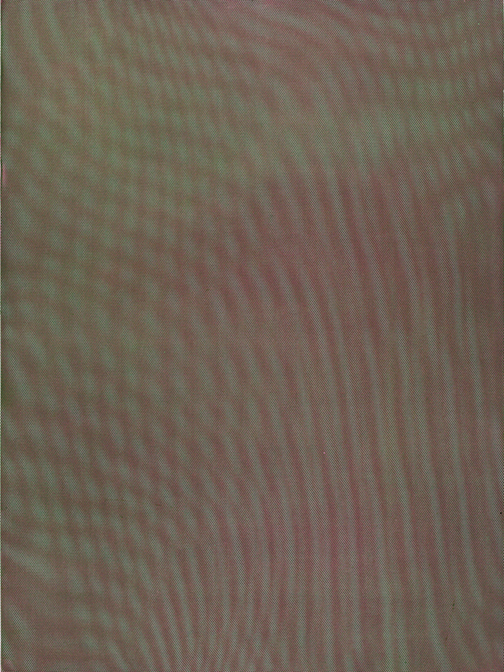Though her practice is deeply multi-disciplinary — incorporating painting, weaving, sculpture, sets, costumes, books, musical instrument building, typeface development, mathematical symbols, jewelry, and photography — Tauba Auerbach has remained fascinated by systems of knowledge and language, and how they manifest themselves in the visual world. In 2012, Auerbach returned to her hometown of San Francisco to work with Paulson Bott Press on a series of prints. To create the prints, she pressed stretched mesh fabric onto softground printing plates, removing the soft material so the metal plate could be etched. The moiré pattern is created when two plates are printed in complimentary colors. Auerbach describes the effect:
The pattern is generated by the way the different patterns on the two plates interact with each other. If you were to just print one plate, it would look like a wonky grid. When you put two together, you get these bands of light and dark. The light comes from where the meshes on the two plates stack up almost perfectly on top of one another, and the white of the paper is visible through all the holes. The darker areas are where the patterns are shifted off from one another by one half of its period — the period is the distance between the parallel lines of the mesh. When the meshes align this way each one sort of fills in the holes left by the other, so less of the white from the paper is visible. These areas are also where you can see that there are two colors at work in each print. You get orange shining through blue, for example and it kind of vibrates.
The resulting prints — seven in total — reveal a hypnotic range of visual and tonal effects that occur when a grid of color is stretched and merged. Auerbach’s work has been the subject of solo and group exhibitions worldwide. In 2011 she received the Smithsonian Artist Research Fellowship Award.
